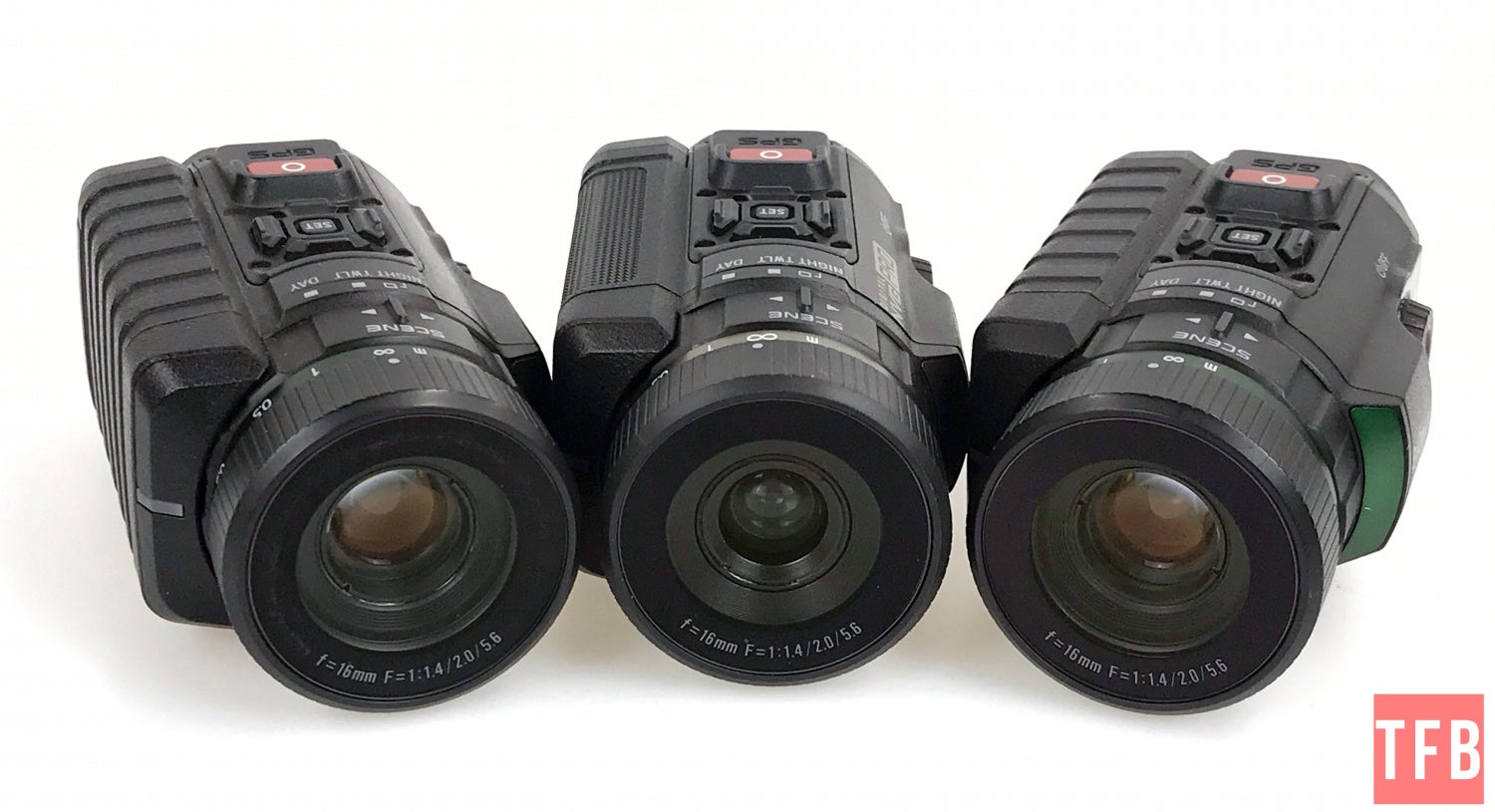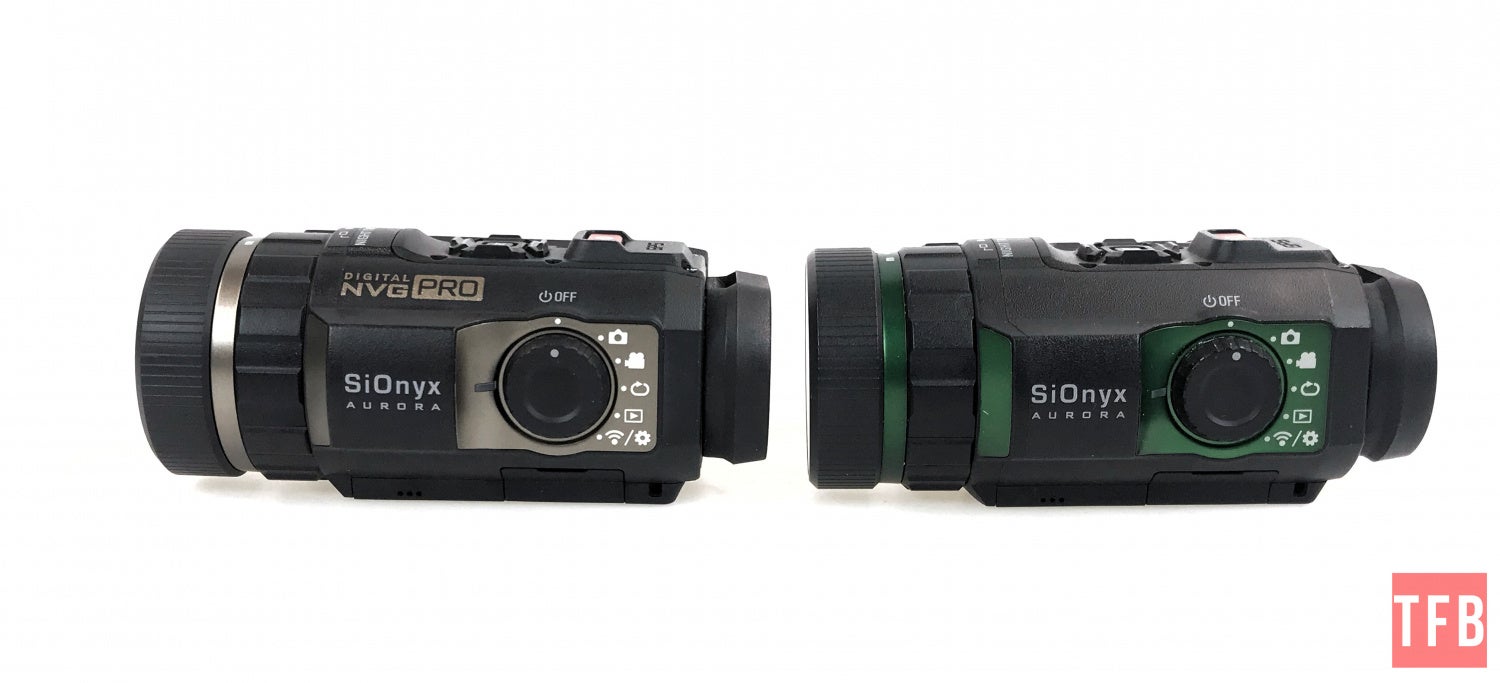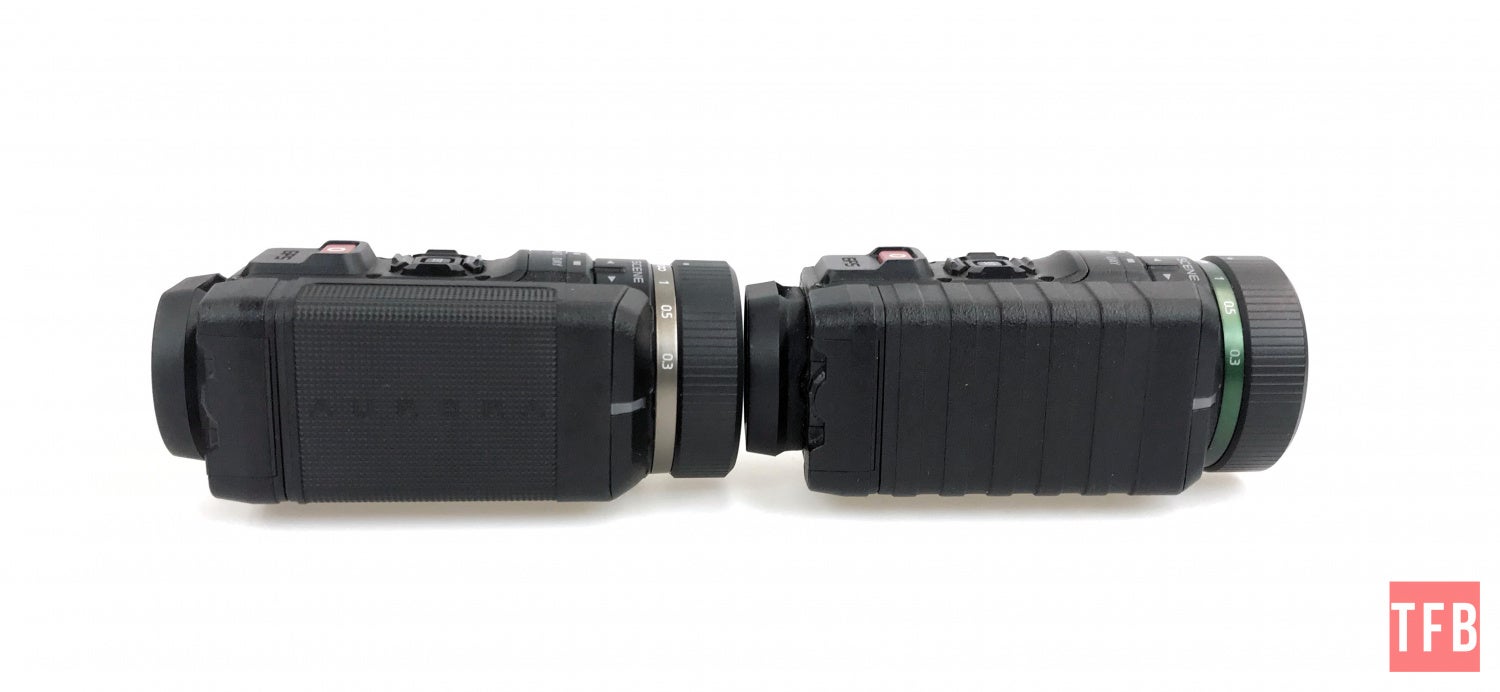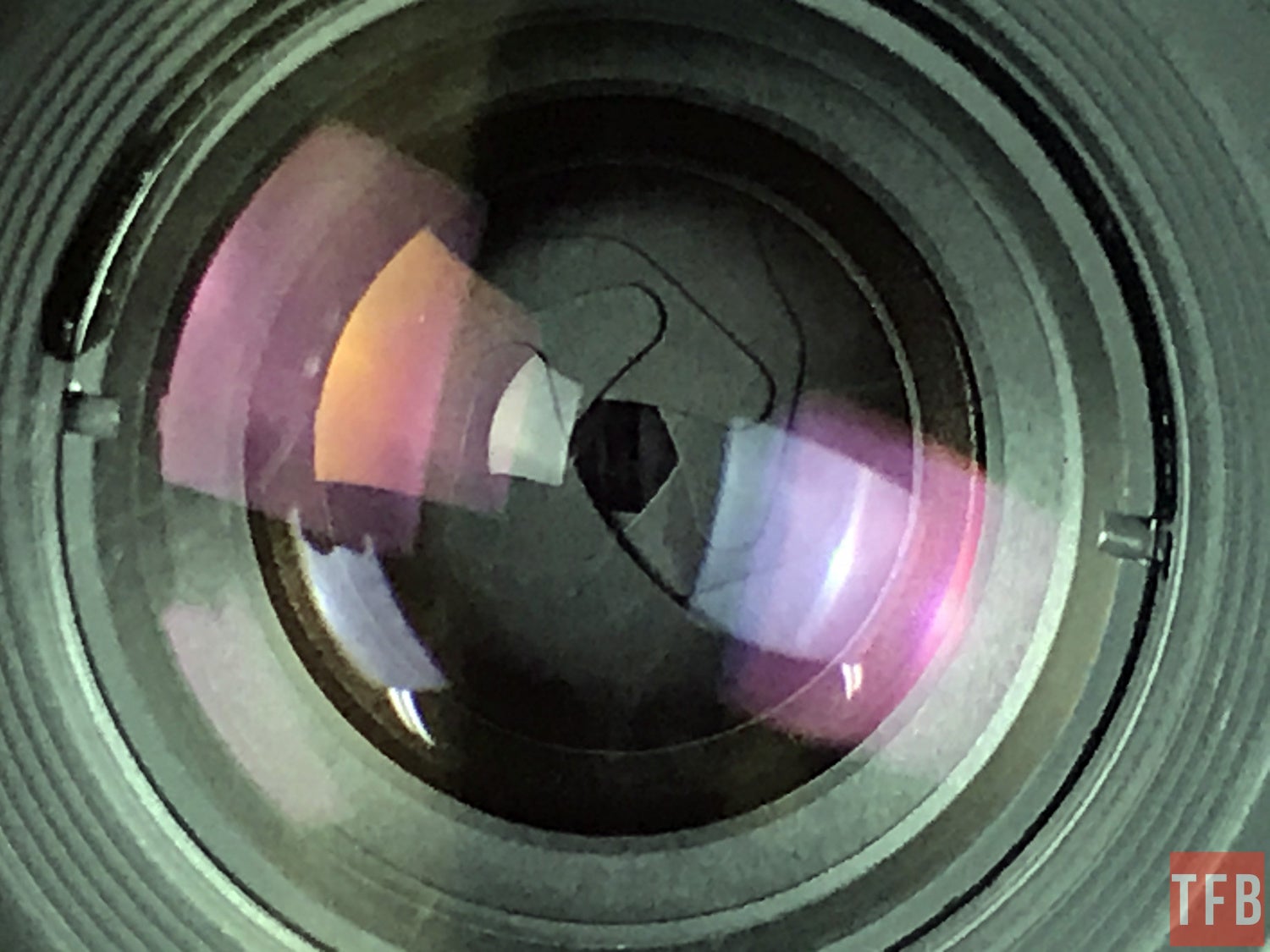At last SHOT Show 2020, SiOnyx unveiled their new Aurora Pro digital night vision camera. If you recall, I reviewed the original Aurora camera a year before that. Well, partially thanks to my mistake in further testing my Aurora, SiOnyx was gracious to replace my broken Aurora for the new Aurora Pro.
Don’t Look Directly At Military Grade Lasers

To be fair, one of the major benefits to the SiOnyx Aurora is that it is a digital camera and typically not susceptible to damage by sunlight or lasers like traditional analog night vision. If you recall, I got to check out a military laser target locator, MARK VII by Northrop Grumman. Well the MARK VII says it is eye-safe. I was not able to see the laser pulse coming out of the MARK VII like I typically do with your run of the mill laser rangefinder. I used my old Aurora to look at the MARK VII to see if any pulse was being beamed out the front. Well, even though the MARK VII is said to be eye-safe, it was not meant to be looked at point-blank range.
For more information regarding lasers destroying CCD sensors, check out this blog post. And for those too busy to read, here is a video.
Moving On to Better Things: SiOnyx Aurora Pro Digital NVG

SiOnyx Aurora Pro between two OG Auroras
I shared the video to the fine people of SiOnyx and they were more intrigued that I captured the destruction on camera. They offered to trade the old and busted for the new hotness. The engineers at SiOnyx were intellectually curious about what kind of damage the sensor had received. So they sent me the new SiOnyx Aurora Pro Digital NVG in exchange for my burned out Aurora.
From the exterior, the Aurora Pro does not seem all that different from the original Aurora. The metallic green accents have been changed to a bronze-like tint.

The texture on the right side of the camera matches that of the Aurora Sport.


Other than the subtle exterior change, the objective lens is different as well.

Aurora Pro Digital NVG on the left and OG Aurora on the right.
The Aurora Pro Digital NVG aperture is physically closer to the front while the OG Aurora aperture is further recessed. When set to day mode, the aperture is closed down and at night mode, it is wide open. The new Aurora Pro aperture does not close down as small as the OG Aurora.


Is The Aurora Pro Better?
When I first saw the Aurora Pro Digital NVG at SHOT Show, SiOnyx had a dark box with a toy inside. They let you look into the box with the original Aurora then look again through the Aurora Pro. The improvement was marginal at best. However, I thought maybe the box test was not indicative of the Aurora Pro’s capabilities. So when SiOnyx sent me the Pro, I borrowed my friend’s Aurora to compare them side by side. Preliminary tests were not great.
There are a lot of people, fans of the Aurora, who say it is just as good and possibly better than Gen 2 analog night vision. That is not entirely true. With plenty of light, the Aurora looks amazing. Here is a video I shot under a full moon when I tested my original Aurora.
But the Aurora camera does not perform well in low light conditions. Anything less than half moon and the image is very noisy. You do not see much unless you compensate with an IR light. SiOnyx claimed that the new Aurora Pro Digital NVG was two times better than the regular Aurora. So I tried to put that to the test. My messy front living room is rather dark at night even though it has three large windows with the blinds closed to block out the bright street lights outside. Here is a test I did with a Gen 2 Harder tube from Germany. Harder is the maker of the image intensifier. I redid the same test with the Aurora Pro and the original Aurora filming side by side.
I used a night vision bridge to hold the Aurora Pro and regular Aurora together so I could film simultaneously and eliminate any variables.

YouTube videos seem to be compressed for some reason so here is some of it on Instagram.
To be fair, this test is very difficult for the Auroras. There is just not a lot of light. Sure I could turn on an IR light to help the Auroras see, but that would not make for a good test. I wanted to see where the Aurora Pro fails.
If we go outside, it starts to look better but so did the original Aurora. The moon was out and was 3/4 full. So plenty of ambient light. Here it is hard to see that the Aurora Pro Digital NVG is better.
I went back out after the moon had set and there was some cloud cover. This way I can hopefully see the Aurora Pro beat the original Aurora in lower light. The test was not great.
SiOnyx reached out and had me take some video and still pictures for them to analyze the meta data. They came to the conclusion that this Aurora Pro was defective. I returned it and they replaced it with another Aurora Pro and they even had a new firmware update for it. The results were much better the second time around.
You Don’t Know The Power Of The Aurora Pro
Read that heading in James Earl Jones’ voice. LOL. Anyway, I revisited the Aurora Pro Digital NVG test against the original Aurora and you can see the Pro is better.
Final Thoughts On The Aurora Pro
The Aurora Pro image is a little bit darker and has more contrast than the original Aurora but there is a lot less noise. According to SiOnyx, the new Aurora Pro can now accept 256gb memory cards. The lag and battery life is still the same as the original Aurora. I did notice that I could adjust exposure compensation while recording with the Aurora Pro but not with the original Aurora.
Is the Aurora Pro worth the extra money? That is up to you. With enough light, the regular Aurora and even the Aurora Sport will perform decently. But if you want better performance at a lower light level then the Aurora Pro will show you more. One issue that has come up recently is SiOynx increasing the prices across the board for all their Aurora cameras. They have all gone up an additional $200. For the past 9 months, the Aurora Sport has been sold for only $399. Now it is $599. SiOnyx has introduced a new Aurora Black. It is a black version of the Aurora Sport and they claim it is weapons rated whereas the Aurora sport is not. The Aurora Black is $699 but comes with a 2-year warranty and the Picatinny weapon mount. The original metallic green Aurora is sold out but I expect it to be $899 when it gets back in stock. It was selling for $699 for the past few months. Now we come to the Aurora Pro. It is $999. This is getting very close to analog night vision territory with regard to pricing. The Aurora Pro is great as a digital camera and the performance is better than the regular Aurora. But is it worth spending that much when you could save just a little bit more and get real night vision? That depends on your priorities. Analog night vision still beats the Aurora Pro in extreme low light and it is more efficient with power. Aurora camera batteries only last 2 hours unless you compensate with a USB power supply. But it still does not beat the minimum 12 hours of run time on a single AA battery like a PVS-14.
What the Aurora Pro does well like all the other Aurora cameras, is that it can see in color and record video or take still photos. Analog night vision cannot do that. There is also the promise of Augmented Reality. I downloaded the SiOnyx AR Aurora app but it was clunky and I could not get it to work. It needs to be streamlined and developed a bit further. If you opt for this App, the Aurora will access your phone via hotspot. I found this to be annoying since I have to use cellular data to download the pictures and video off the Aurora and onto my phone. If I tried to use the standard app, it would not work. I would have to go back into the Augmented Reality app and remove the Aurora camera from it then I could use the standard app as normal. Also, I had issues connecting the Aurora camera to the Augmented Reality app. While the App would see the camera and say it was connected, often it wasn’t and result in trying the process over and over again until it did connect.
But don’t let the buggy app be a focus point against the Aurora camera. Far from it. The Aurora and now the Aurora Pro Digital NVG still work well within their given envelope parameters. As long as you know this and operate it in these conditions the image will be great.
 Your Privacy Choices
Your Privacy Choices
